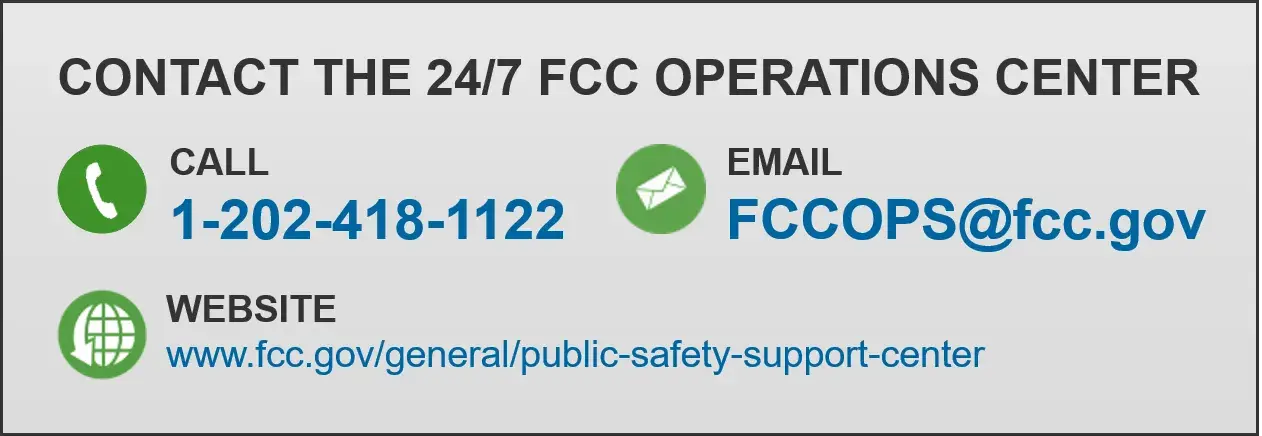Communications provide a mission-critical lifeline for America’s first responders and federal law enforcement, ensuring they can do their jobs to protect and serve our citizens, communities and nation. Illegal jamming of communications systems – including jamming of GPS, radio and wireless systems – poses a threat to law enforcement and public safety across the country. Jammers may interfere with public safety communications and can leave responders without vital communications and critical situational awareness. While jamming is a growing threat to public safety communications, many first responders and federal law enforcement officers across the country remain unaware that jammers exist, or that jammers can impede their communications. Federal law prohibits the operation, manufacture, sale, marketing, importation, distribution or shipment of jamming equipment.
The U.S. Department of Homeland Security (DHS) Science and Technology Directorate (S&T) is committed to making first responders safer and more aware of jamming and its potential impact to their communications, safety and ability to execute their mission. DHS S&T works to combat jamming threats by evaluating the threat, developing and testing mitigation technologies and tactics, working with public safety agencies to update training procedures, and raising awareness of jamming threats and reporting channels. In 2016, DHS S&T held the First Responder Electronic Jamming Exercise to assess the impact of jamming on public safety communications systems and mission response, and identify gaps in training.
 Building on the results of the 2016 exercise, the 2017 First Responder Electronic Jamming Exercise (JamX 17) was the next step towards making our country and communities more resilient to jamming threats. During JamX 17, DHS S&T and public safety, law enforcement, private sector and academic partners characterized the impact of jamming on a variety of communications systems and evaluated tactics and technologies to help responders better identify, locate and mitigate the impact of jamming. S&T’s objective is to enable federal, state and local operators to recognize, respond to, report and resolve jamming incidents without compromising the mission or endangering communities. Please review the below sections to learn how to increase organizational and community communications resilience to jamming and other interference threats.
Building on the results of the 2016 exercise, the 2017 First Responder Electronic Jamming Exercise (JamX 17) was the next step towards making our country and communities more resilient to jamming threats. During JamX 17, DHS S&T and public safety, law enforcement, private sector and academic partners characterized the impact of jamming on a variety of communications systems and evaluated tactics and technologies to help responders better identify, locate and mitigate the impact of jamming. S&T’s objective is to enable federal, state and local operators to recognize, respond to, report and resolve jamming incidents without compromising the mission or endangering communities. Please review the below sections to learn how to increase organizational and community communications resilience to jamming and other interference threats.

The First Responder Electronic Jamming Exercise Program, part of S&T’s Next Generation First Responder (NGFR) Apex program, develops and adapts cutting‑edge technologies to make first responders better protected, connected and fully aware while responding to emergencies.
Watch the 2016 First Responder Electronic Jamming Exercise Video
The first step to improving communications resilience is recognizing if there is an interference problem. Disruption or failure of wireless communications or mapping equipment – including cellular, LMR or GPS systems – for unknown reasons could indicate jamming. Jamming indicators include all the following.
- Can’t communicate in areas where there is typically good radio or cell coverage
- Can’t communicate with normally reliable base radios or repeaters
- Can’t communicate on multiple communications devices using multiple bands
- Notice a significant loss of lock or general failure of GPS systems
- Can significantly improve communications capability by moving a short distance away from a fixed “dead zone”
In a jamming environment, an emergency response or law enforcement mission may be compromised by the lack or unreliability of communications, and they may not realize there is a problem. Many operators assume that a communications device is simply broken if it isn’t working, rather than considering that jamming could be the source of the problem. Educating operators that jamming is a real issue and ensuring they understand what to do is essential to keeping responders and our communities safe.
The first priority for the responders is to complete the mission while ensuring operator safety, so DHS S&T has developed several basic mitigation tactics to ensure responders can continue focusing on their mission while re-establishing communications:
- Switch Communications Devices or Bands: Try using a different band on radios, a cellular call or text, or disconnect Bluetooth. Many jammers only target certain types of devices, and so one device may have connectivity while others do not.
- Move Away: Move 10-20 feet in any direction to see if coverage improves. If inside, try moving outside and vice versa.
- Go High: Elevation increases range, so try climbing a flight of stairs, or onto the back of a truck.
- Shield Yourself: Go around a corner or behind a vehicle. Because jamming is a signal, it can be blocked or weakened by physical barriers, including vehicles or buildings. Heavy materials, such as metal or concrete, work best to shield devices from jammers.
- Mobiles versus Portables: It is better to transmit on the mobiles and receive on portables to get through jamming. Mobile radios in response vehicles are more powerful, so they can better punch through jamming to send a message, but because they have more sensitive antennas than portable handheld radios, the receiver gets overwhelmed by the jamming noise and can’t receive. Portable radios have poor-quality antennas, so they don’t pick up as much noise.
Once the primary mission is accomplished, it is important to locate the source of the interference and neutralize it. Trained technicians can located jamming devices using spectrum analyzers and direction-finding equipment, which are now available for purchase with grant funding through the FEMA Authorized Equipment List (06CP-07-RFDF - Equipment, RF Direction Finding and 06CP-07-RFSA - Equipment, RF Detection and Spectrum Analysis). Once found, the device should be turned off and disconnected from the power source. One of the tactics that DHS S&T validated at JamX 17 to destroy jammers is covering it with a Mylar emergency blanket – something most responders have in the back of their car. This is an easy and effective way to disable the jammer quickly without touching it directly. Operators should follow all local policies regarding device seizure and evidence collection on and around the jamming device.
All suspected radio frequency interference must be reported to the Federal Communications Commission as soon as possible. DHS and the FCC monitor reports of interference and jamming to conduct trend analysis and inform policy. Most interference incidents are not currently reported, which makes it difficult to understand how frequently jamming occurs and what the consequences are.
All interference should also be reported within your organization to the information technology or radio technician point of contact. DHS S&T recommends an organization’s information technology or radio technician point of contact should track reports of equipment malfunctions to look for patterns of behavior. If all radios or cellphones do not work in the same geographic area, the technician may notice a trend that could indicate jamming and investigate the potential threat. Once confirmed, the suspected incident and all recorded data should be reported to the FCC Enforcement Bureau so there is a federal record of the incident. For more detailed instructions on how to identify jamming using a spectrum analyzer, please contact Jamming.Exercise@hq.dhs.gov.
In addition to concluding the legal aspects of a jamming case, one key aspect of resolving jamming incidents is identifying lessons learned and then applying those to improve an agency’s response to jamming. To better prepare your agency, DHS S&T recommends focusing on education, preparation, and evaluation:

- Educate operational employees. Training new and incumbent employees is essential to ensure they are aware of jamming threats, symptoms and response protocols. Can they recognize a jammer? Do they know the symptoms of interference? Do they know how to respond to and report incidents?
- Prepare employees and agency policies. Ensure your agency is prepared by updating policies and interference reporting requirements, understanding what legal actions officers are authorized take to counter jammers, conducting operational exercises, and procuring any needed equipment to detect and locate interference. It is also critical to develop a Primary, Alternate, Contingency, Emergency (PACE) Plan for communications and to train all operators from every local agency on it. If the primary means of communication is disabled by jamming or other issues, all operators will understand what the fallback communications means is and coordination can continue without interruption.
- Evaluate communications resilience. Assess how well employees are prepared to identify, locate and mitigate interference and evaluate your baseline communications resiliency. If communications vulnerabilities are exposed, address the gaps. Develop after action reports to review how interference incidents were handled and identify lessons learned to incorporate throughout the agency.
For the latest information about S&T First Responders, visit the S&T First Responder News, Videos and Events pages.
News
- Snapshot: S&T Helps First Responders Mitigate Potential Jamming
- Blog: Keeping Communication Lines Open
- News Release: DHS S&T Assesses Mitigation Tactics against Jamming
- News Release: DHS S&T Working to Combat Electronic Jamming
Multimedia
- 2016 and 2017 First Responder Electronic Jamming Exercise Photos
- 2016 First Responder Electronic Jamming Exercise Video
- 2017 First Responder Electronic Jamming Exercise (JamX 2017) Video
- DHS and Federal Communications Commission Joint Jammer Infographic

